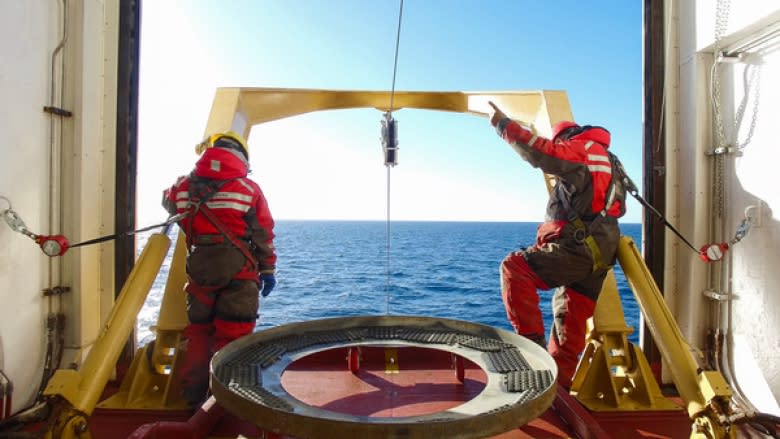Filmmaker aboard icebreaker documents aborted mission to study Arctic climate change
When Manitoba filmmaker Christopher Paetkau embarked on a research journey to study the effects of climate change in the high Arctic, he never expected those same effects to thwart the very mission he was there to document.
The trip was part of a four-year, $17-million project led by researchers at the University of Manitoba. The scientists hoped to use the icebreaker, Canadian Coast Guard Ship Amundsen, for part of a 133-day expedition to study the changes in the region.
They departed Quebec City on May 25 hoping to make it into Hudson Bay, but hazardous ice conditions off the coast of Newfoundland forced them to divert in order to help other vessels trapped in ice — which had broken loose due to warming in the Arctic.
"The Amundsen is Canada's primary research vessel going into the high Arctic and studying the effects of climate change up there. So when you lose a leg or you lose time or you lose anything, it has impacts not only on the science but on the scientists," Paetkau said in an interview with CBC's Weekend Morning.
The mission is documented in Paetkau's new film, Breaking Ice, which will premiere at the Winnipeg Art Gallery on Thursday at 7 p.m.
Paetkau had been on the ship for two previous legs of its journey, beginning in Kugluktuk, Nunavut into the Beaufort Sea, and then down the Labrador coast to Quebec City.
"They were studying all sorts of things… That's sort of the beauty of this ship, is that they go from the atmosphere to the bottom of the sea floor. So you're covering essentially everything," he said.
Paetkau has been working in the Arctic for a long time and he says the region is the "canary in the coal mine" of climate change, where small fluctuations in the climate have big impacts on life farther south.
More than the science, however, Paetkau says he was most surprised by the scientists themselves, and the lengths they were willing to go to get their data.
"Growing up it's sort of like the lab and it's the coats and it's all this stuff, but then really, you've gotta get the data somehow. And so...how are you getting it? And that's the part that sort of endeared me to them.
"It's really just a human struggle. They have to get somewhere, they have to do something, and things get in the way, and how do they react to that?"
Paetkau watched the scientists try to keep their spirits up each time the Amundsen got diverted away from its goal. At one point the ship got called away for a search and rescue mission.
"It was really difficult for everybody, but the scientists were willing to jump in and to look and to search, and also to know when to stay out of the way of the coast guard and let them do their job. It was this really intricate dance going on," he said.
"You're dealing with ice, you're dealing with cold water, you're dealing with Canada, and we all know what that can throw at you."
Paetkau's favourite experience on the trip was hearing the sound of the icebreaker chewing its way through the water.
"It's a sound I've never heard before. You've got this massive machinery just chugging along … and all of a sudden you're hearing the ice as it's cracking and it's soft, it's like a soft crack but the machine is so loud.
"And then it lifts up on either side of the ship, it's almost like it's breathing as it splashes out on the other side."
In Paetkau's room below deck, he could hear the scraping sound of the ice against the hull of the ship.
"At first it sounds like there's a problem, but then you get used to it."
The Winnipeg Art Gallery will hold a free screening of the film at 7:00 p.m. on Thursday.



